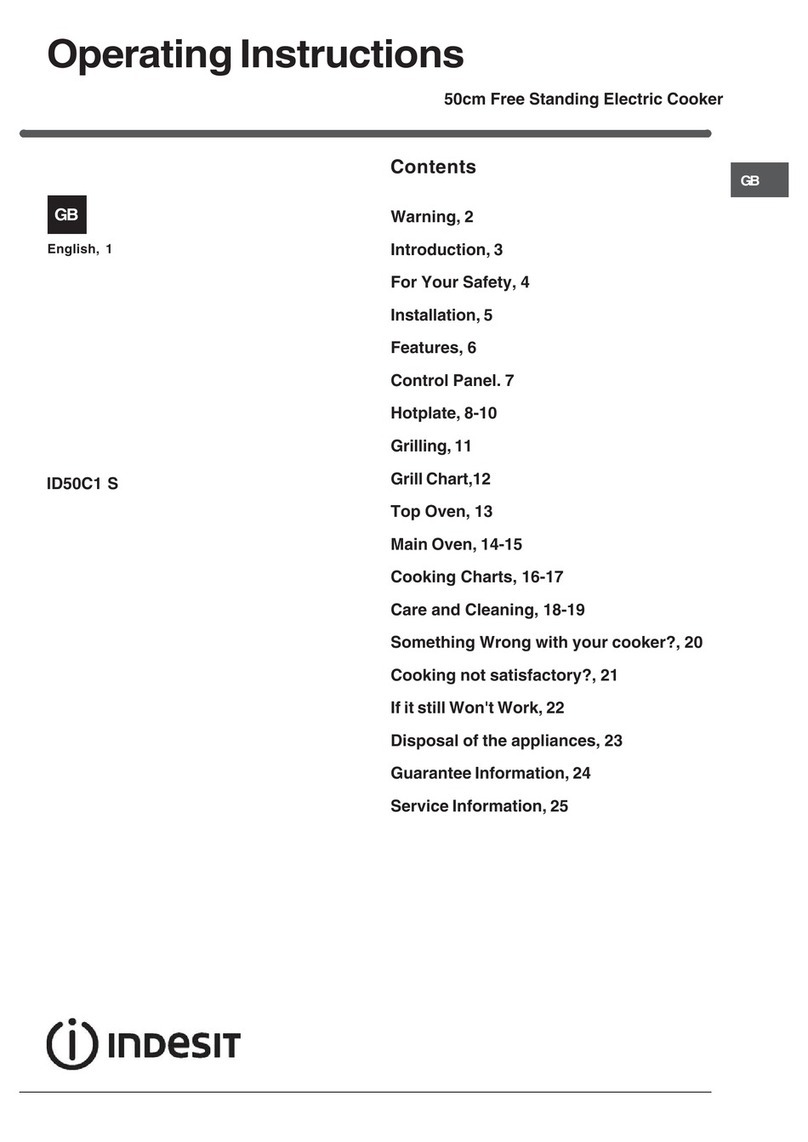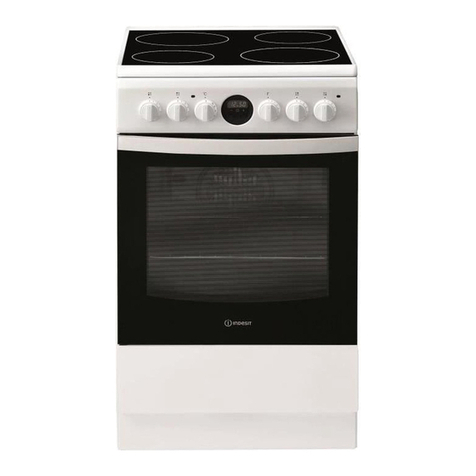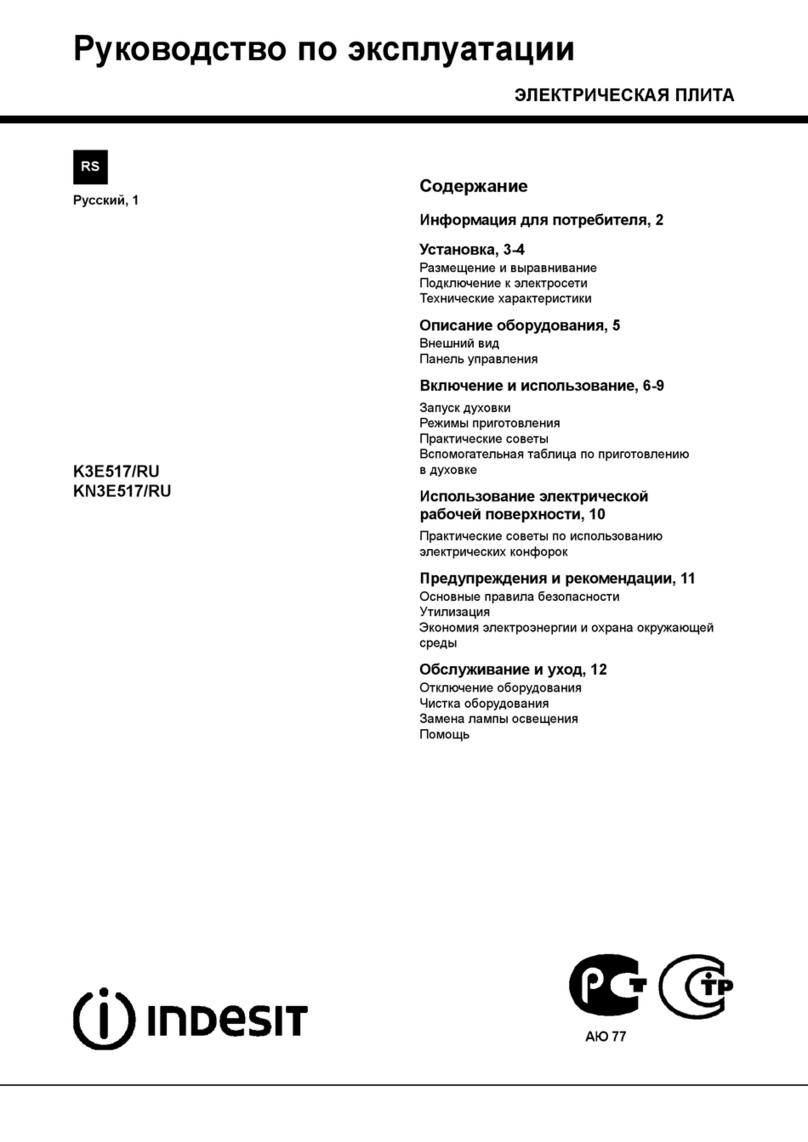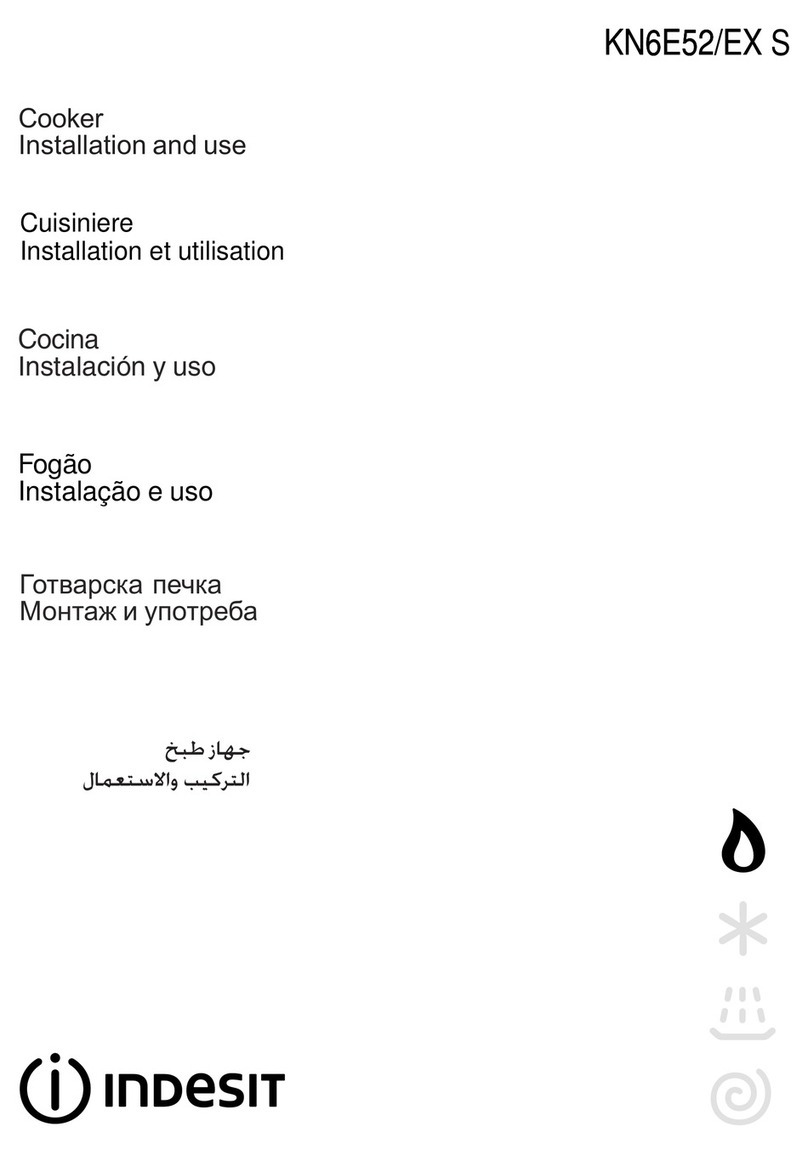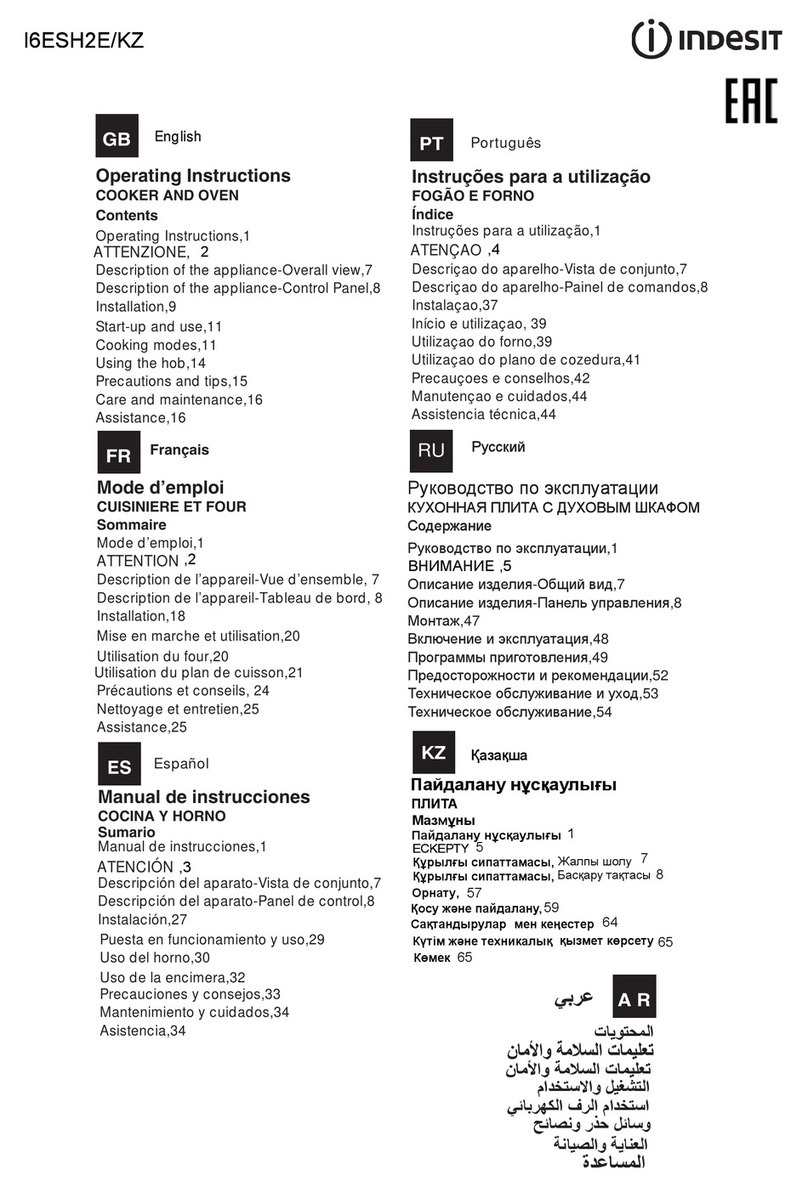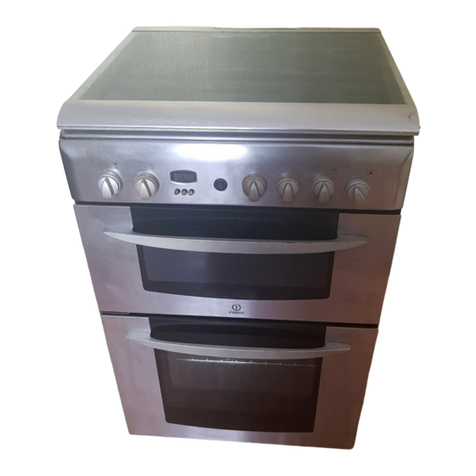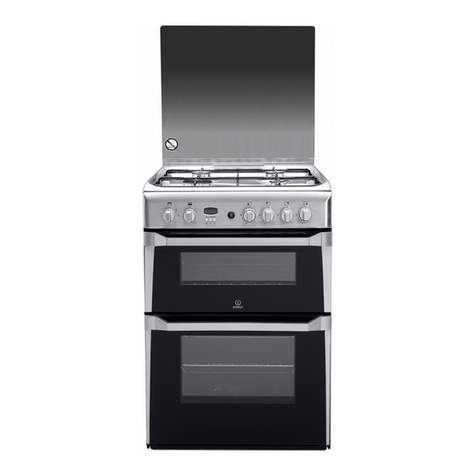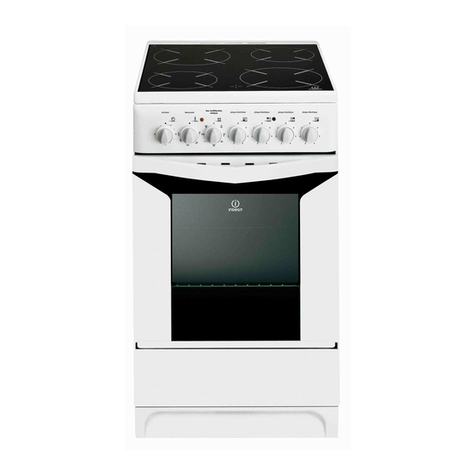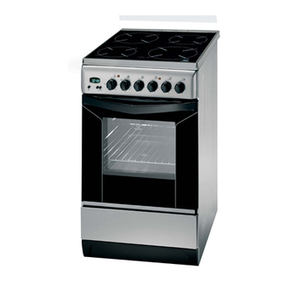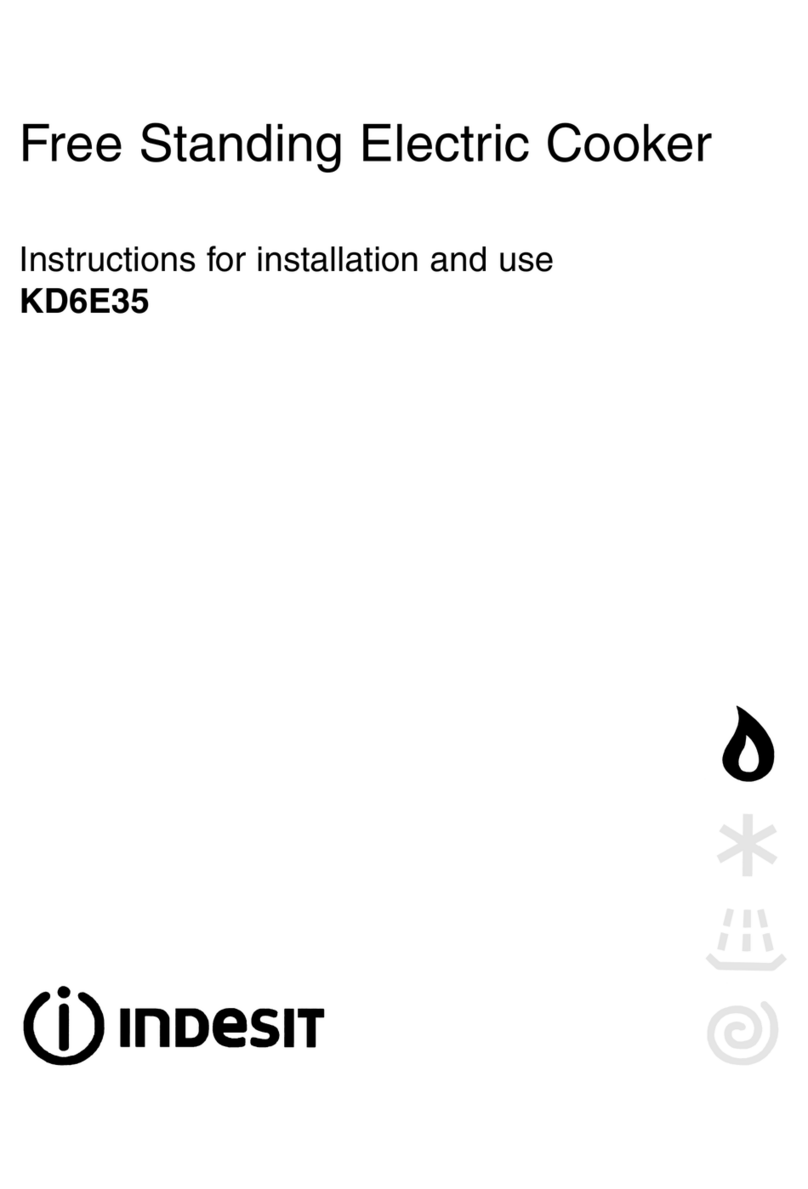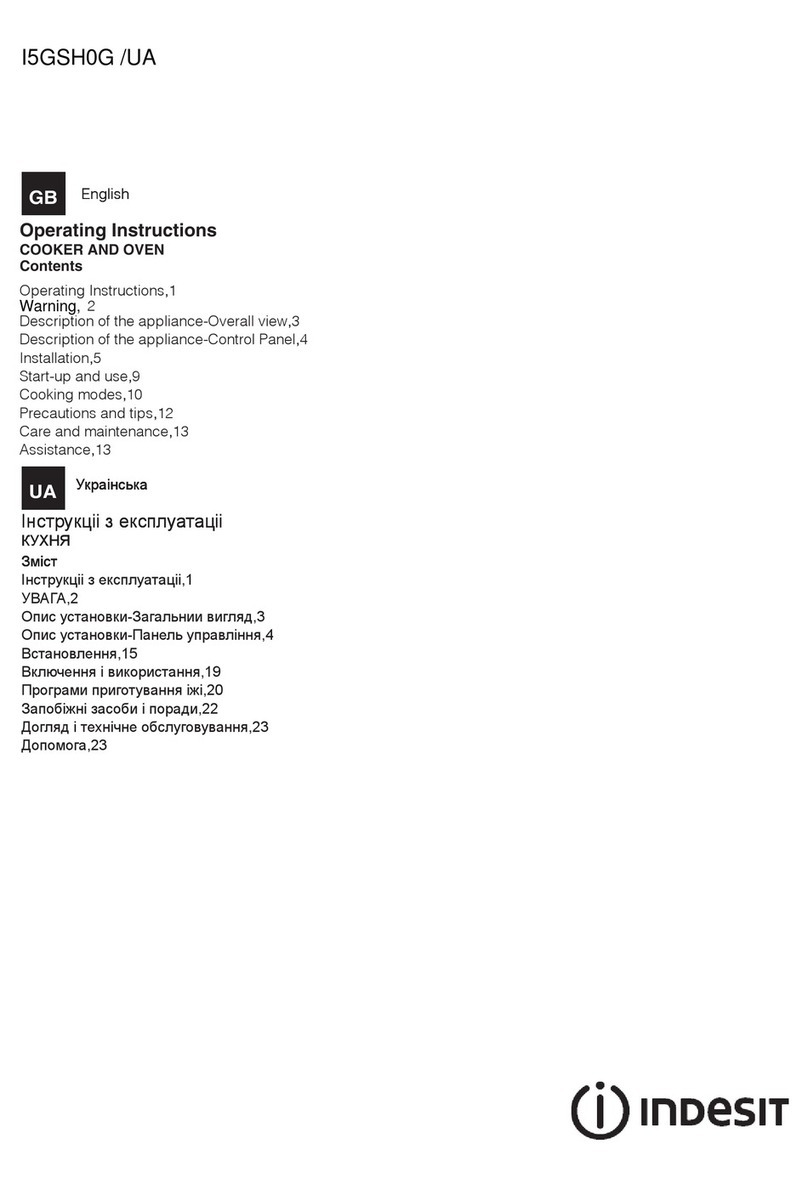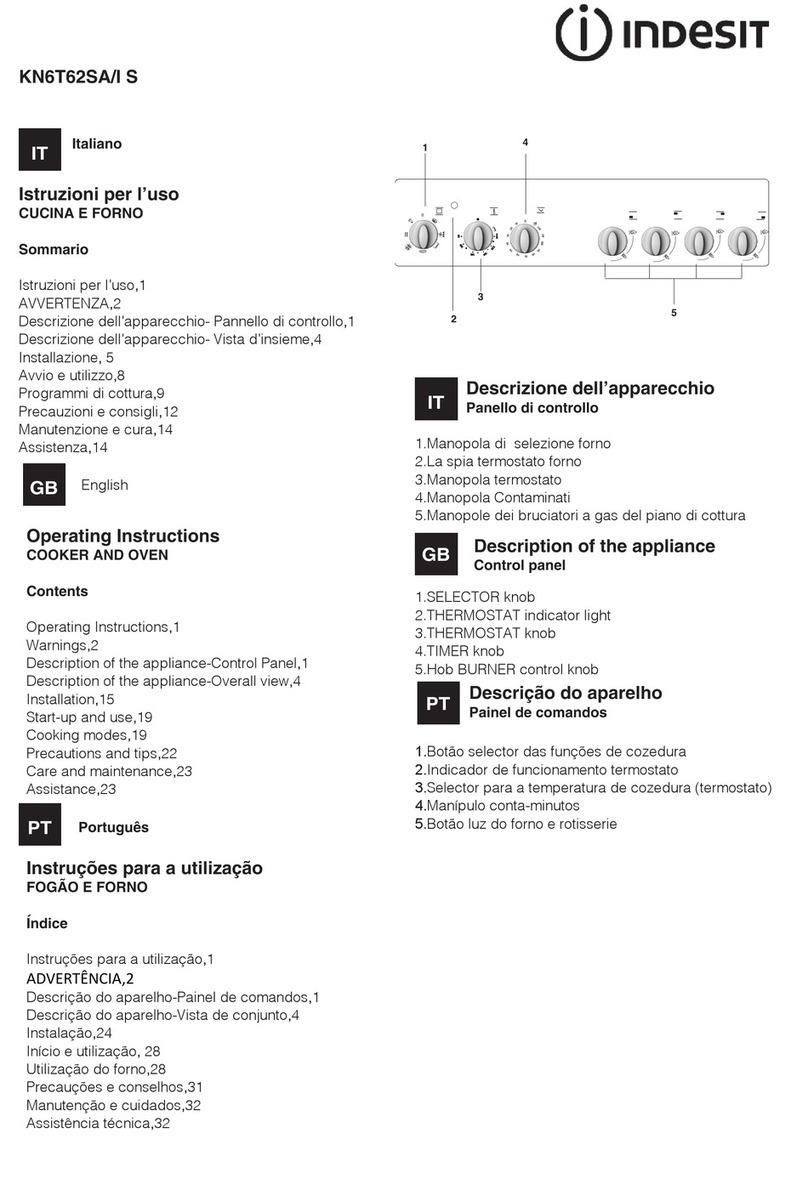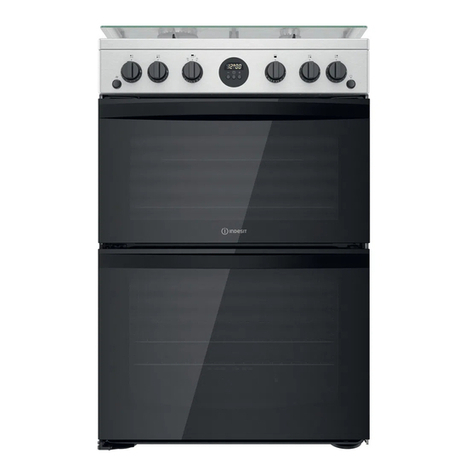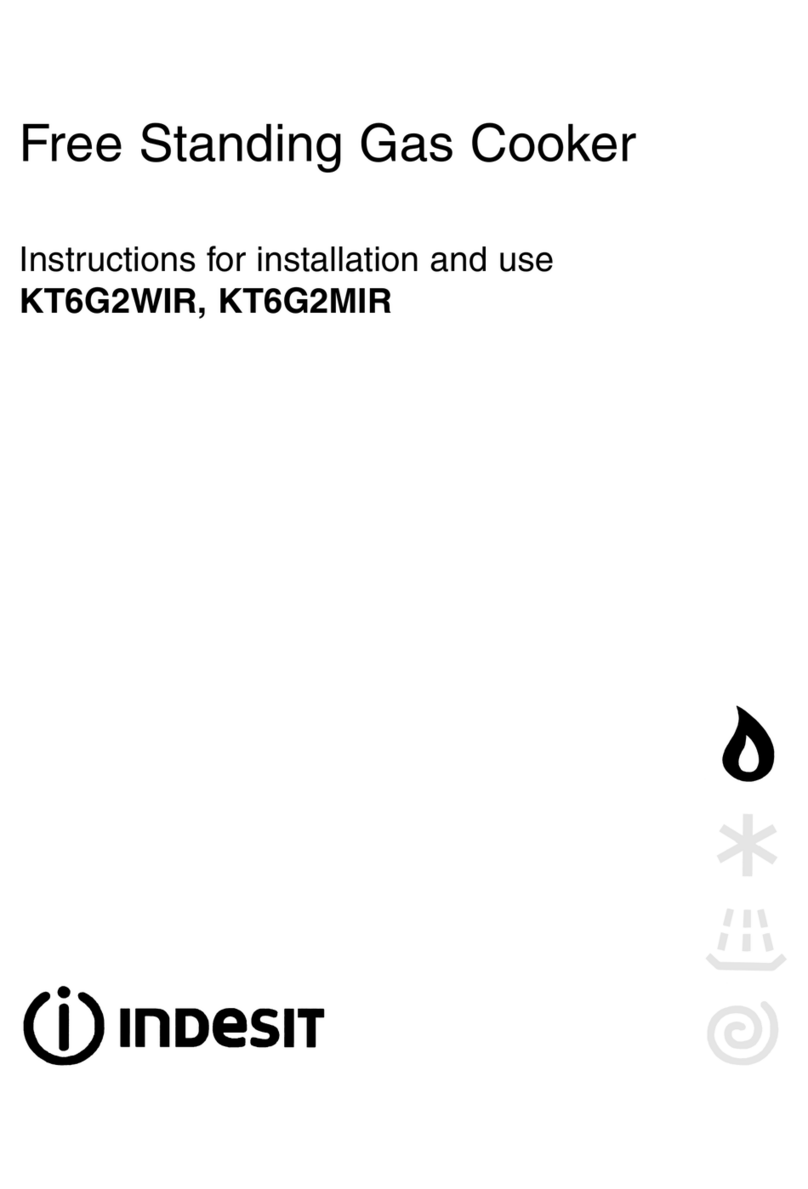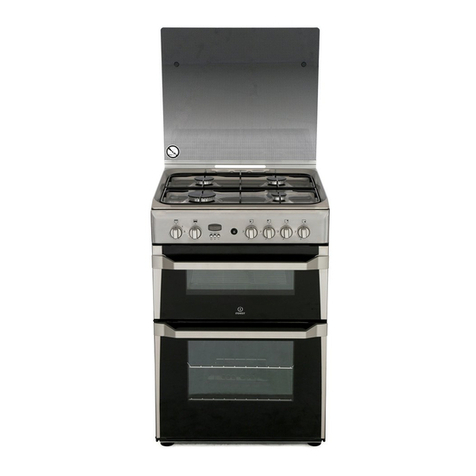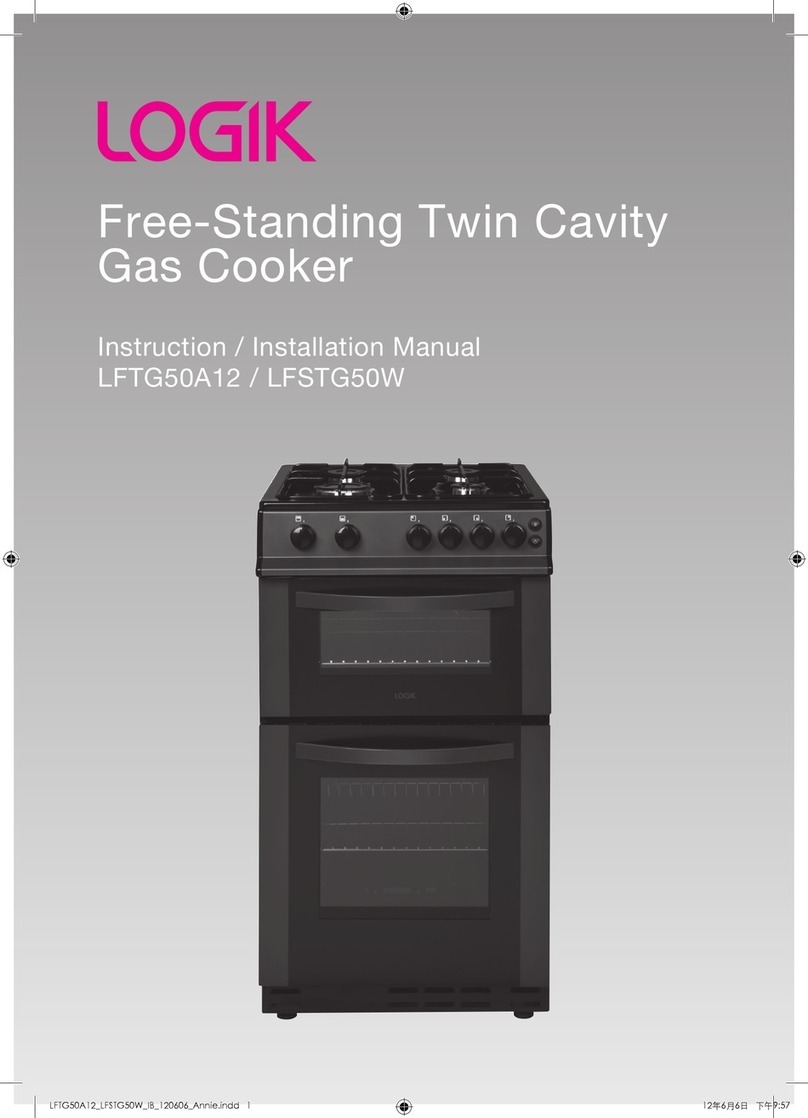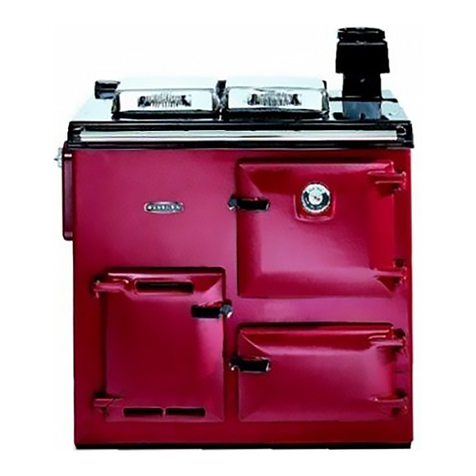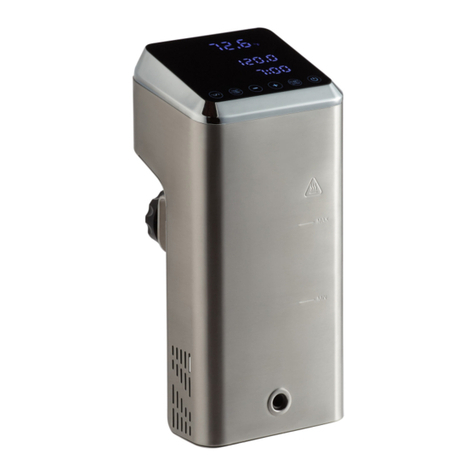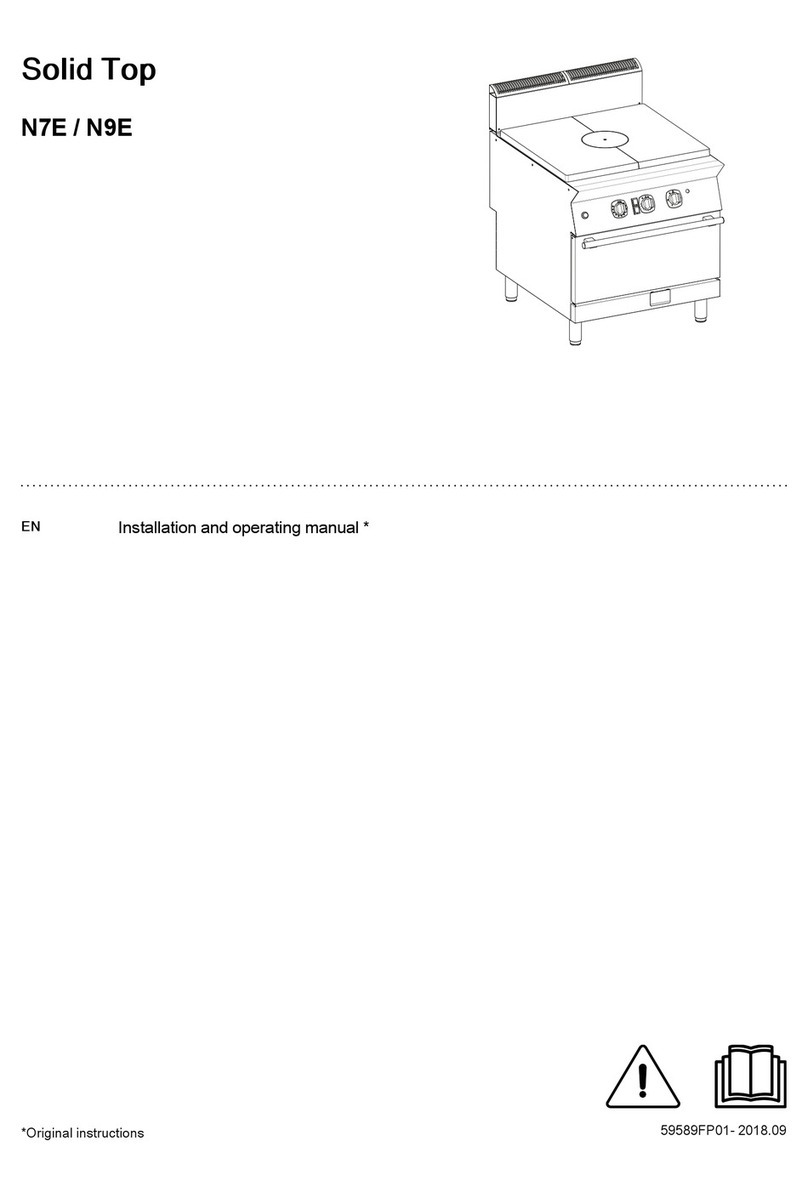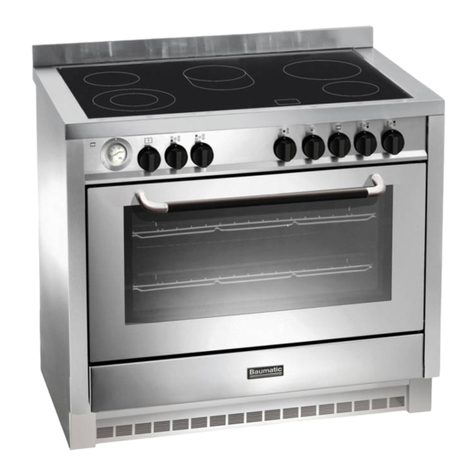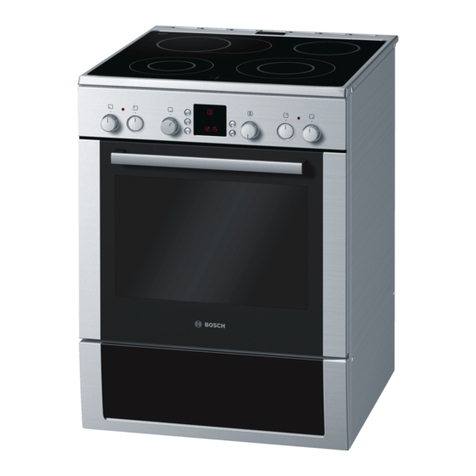2
1 These instructions are only for those countries
whose symbols appear in the booklet and on the
matriculation plate of the appliance.
2 Thisapplianceisintendedfornon-professionaluse
within the home.
3 This owner’s manual is for a class 1 appliance
(installed independently) or class 2 - sub-class 1
appliances (installed between two cabinets).
4 Before using your appliance, read your owner’s
manual carefully since it provides important
instructions for the safe installation, use and
maintenance of your cooker. Keep in a safe place
for future reference.
5When you have removed the packing, check that the
appliance is not damaged. If you have any doubts, do
not use the appliance, contact your nearest Ariston
Service Centre. Never leave the packing components
(plastic bags, foamed polystyrene, nails, etc.) within
thereachofchildrensincetheyareasourceofpotential
danger.
6The appliance must be installed only by a qualified
person in compliance with the instructions provided.
The manufacturer declines all responsibility for
improper installation which may harm persons and
animals and damage property.
7The electrical safety of this appliance can only be
guaranteed if the cooker is correctly and efficiently
earthed, in compliance with current regulations on
electrical safety. Always ensure that the earthing is
efficient; if you have any doubts call in a qualified
electrician to check the system. The manufacturer
declines all responsibility for damage resulting from a
system which has not been earthed.
8Before connecting the appliance to the mains, check
thatthe specificationsindicated onthe ratingplate (on
the appliance and/or packaging) correspond to those
of the electrical mains system of your home.
9The cooker must be connected to the mains electrical
supply via a earthed 13 or 15 amp. socket outlet, me-
etingtheelectrical current requirementsdetailedunder
“Electrical Connection” in the installation section later
in this book.
10 The openings and slots used for ventilation and
dispersion of heat on the rear and below the control
panel must never be covered.
11 Thisappliance mustbe usedfor thepurpose forwhich
it was expressly designed.Any other use (e.g. heating
rooms)is considered tobe improper and consequently
dangerous.The manufacturer declines allresponsibility
for damage resulting from improper and irresponsible
use.
12 Anumberof fundamental rulesmust be followed when
using electrical appliances. The following are of
particular importance:
•do not touch appliance with wet or damp hands or
feet
•do not use the appliance while bare-footed
•do not use extension leads other than with the
utmost caution
•do not pull the power supply cable or the appliance
itself to disconnect the plug from the socket.
•do not expose the appliance to weather agents
(raing, sun, etc)
•donotallowunsupervisedchildrenorinexperienced
persons to use the appliance.
13 Always switch off the electrical supply to the cooker
and allow it to cool down before carrying out any
cleaning operations etc.
14 In the case of faults and/or faulty operation, switch off
the electricity supply to the cooker and do not tamper
with it. For repairs call only an authorised after-sales
servicing centre and request the use of original spare
parts only. Failure to comply with the above may com-
promise the safety of the appliance.
15 Remember if you are discarding any domestic
appliance with which children etc. may play, make it
safe by removing the Mains Cable from it, after first
disconnecting the electricity supply. Remove glass
parts where possible, and consider sharp edges etc.
which may now be exposed.
16 Ovenglovesor similar protectionshouldbe used when
moving containers in or out of hot ovens and care
should be taken to avoid contact with hot surfaces of
exposed skin on wrists or arms.
17 One of the commonest types of accident involving
cooking appliances is burns to tabies and young
children. These can occur by:
a) Touching hot parts
b) Being splashed with hot liquids
c) By pulling projecting pan handles and tipping hot
liquids over themselves
18 Please remember that a small child’s skin is far more
sensitiveandtherefore more easily burnt thananadult.
Youare,therfore, strongly advised to keep babies and
young children well clear of this appliance during use
and whilst it is cooling down after use.
19 Unstable or out of shape pans should not be used on
the hob in case they cause spillage of hot liquids.
20 Pansmust only be placed inthe centre of electric rings
andof gridson gasburners. Placingpans offcentreor
to one side may cause spillage.
21 Special care should be taken when using chip pans
etc. in order to avoid splashing or spillage of hot oil.
Theyshould not beused unattended since overheated
oil may boil over and ignite on the hot heating element
or gas flame.
22 Somepartsoftheappliance,inparticularthehotplates,
remainheated fora longtime afteruse. Makesure not
to touch them.
23 Never use flammable liquids such as alcohol or
gasoline, etc. near the appliance when it is in use.
24 Make sure the knobs are in the “•”/”o” position when
the appliance is not in use.
25 Gas appliances require regular air exchange to
ensure trouble-free performance. When installing
the cooker, follow the instructions provided in the
paragraph on “Positioning” the appliance.
26 When you are using the grill or the oven, some parts
of the door can become very hot. Keep children away
from these.
Important safety warnings


